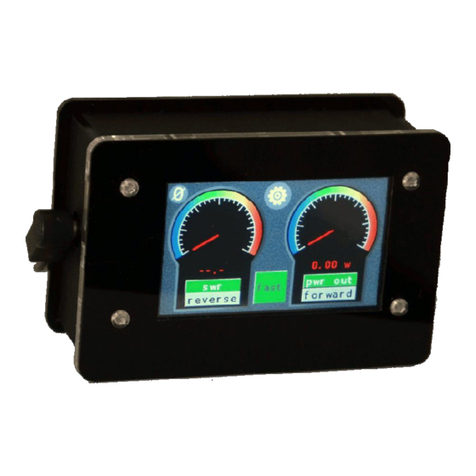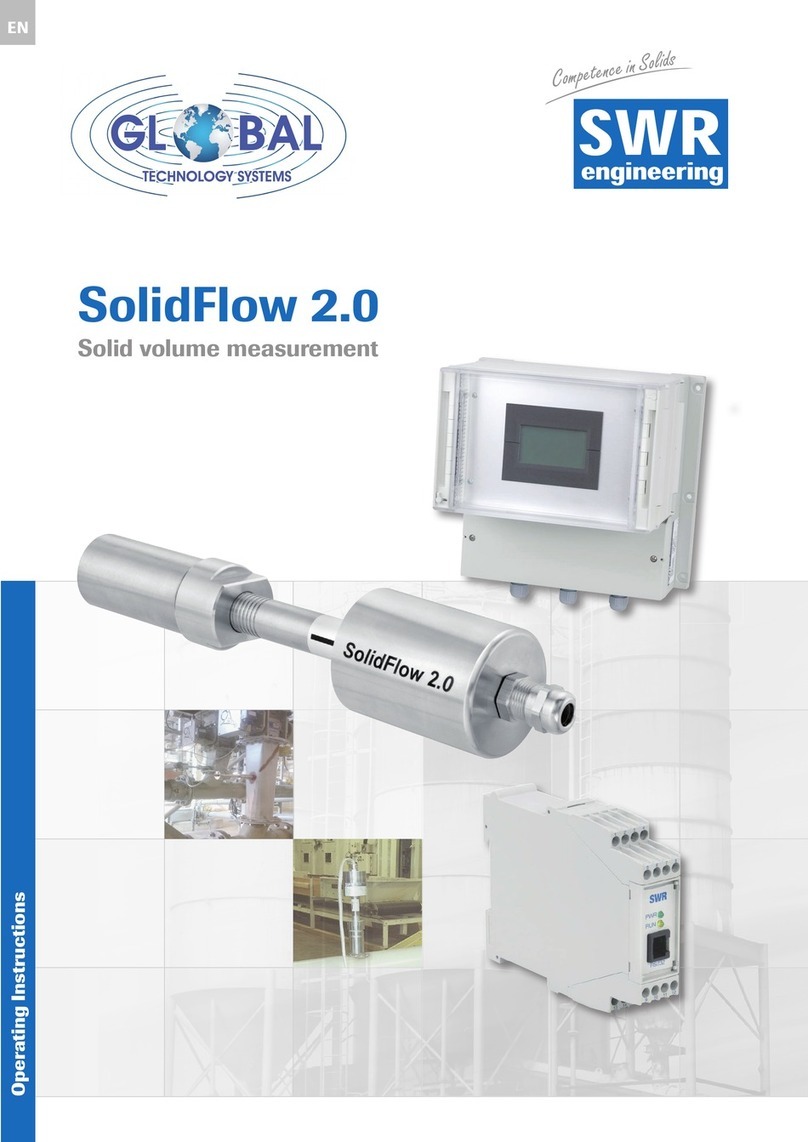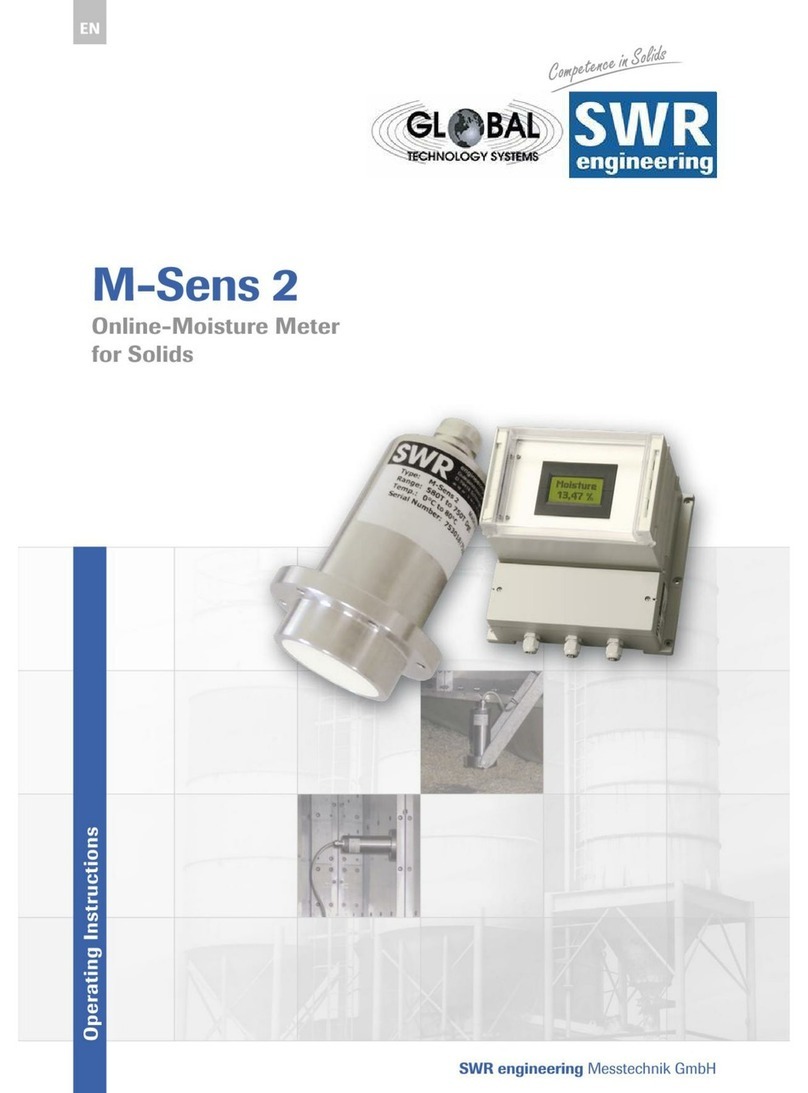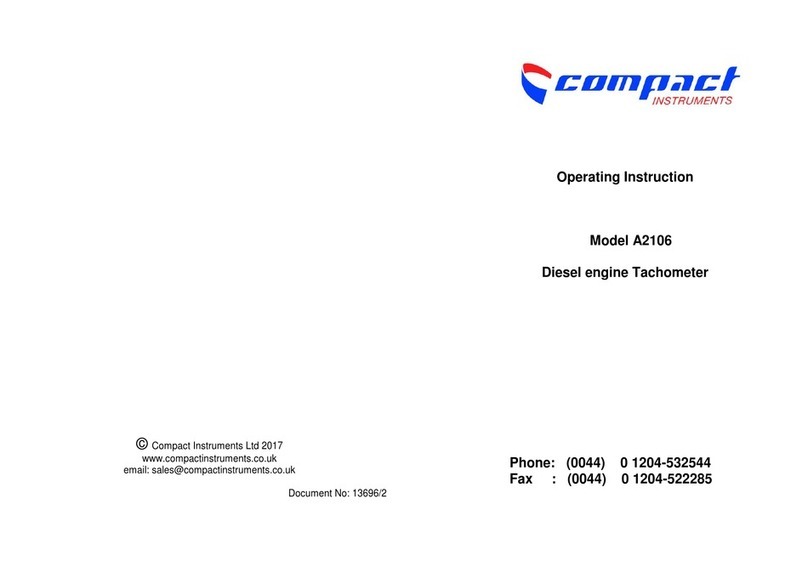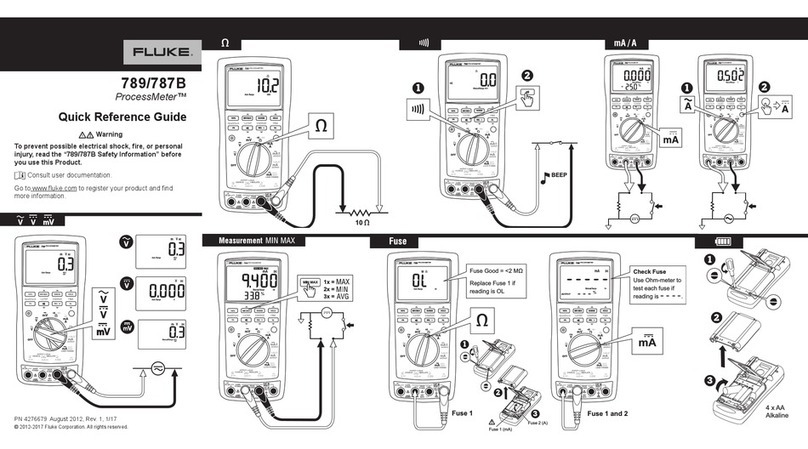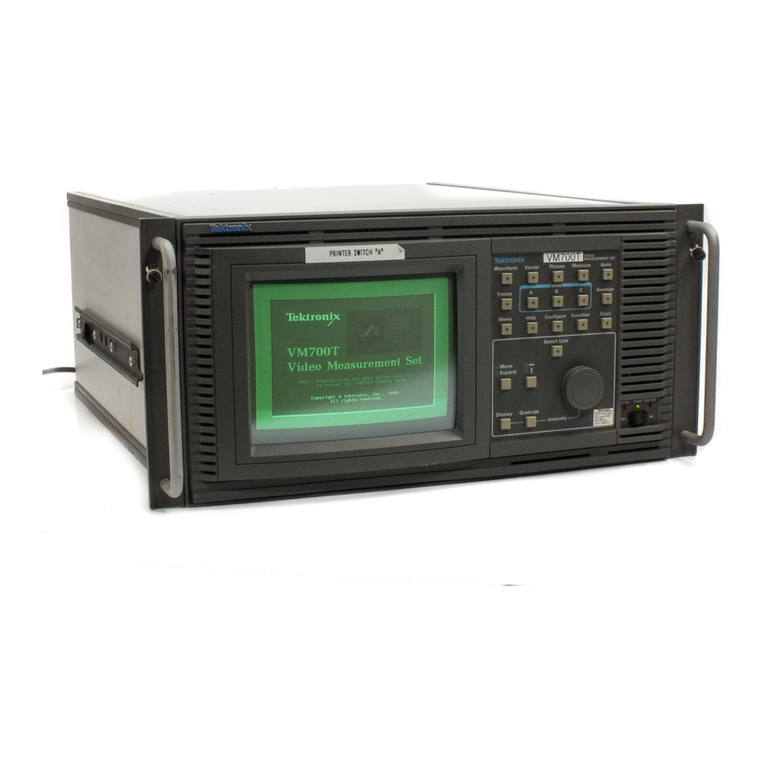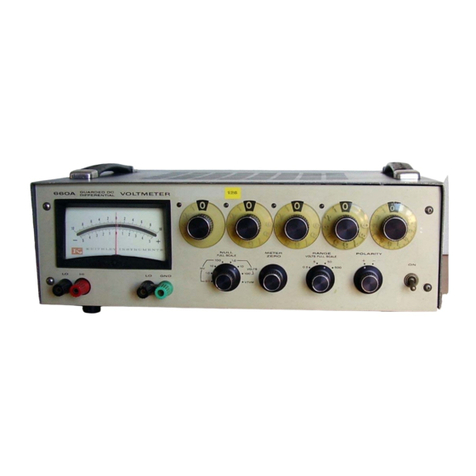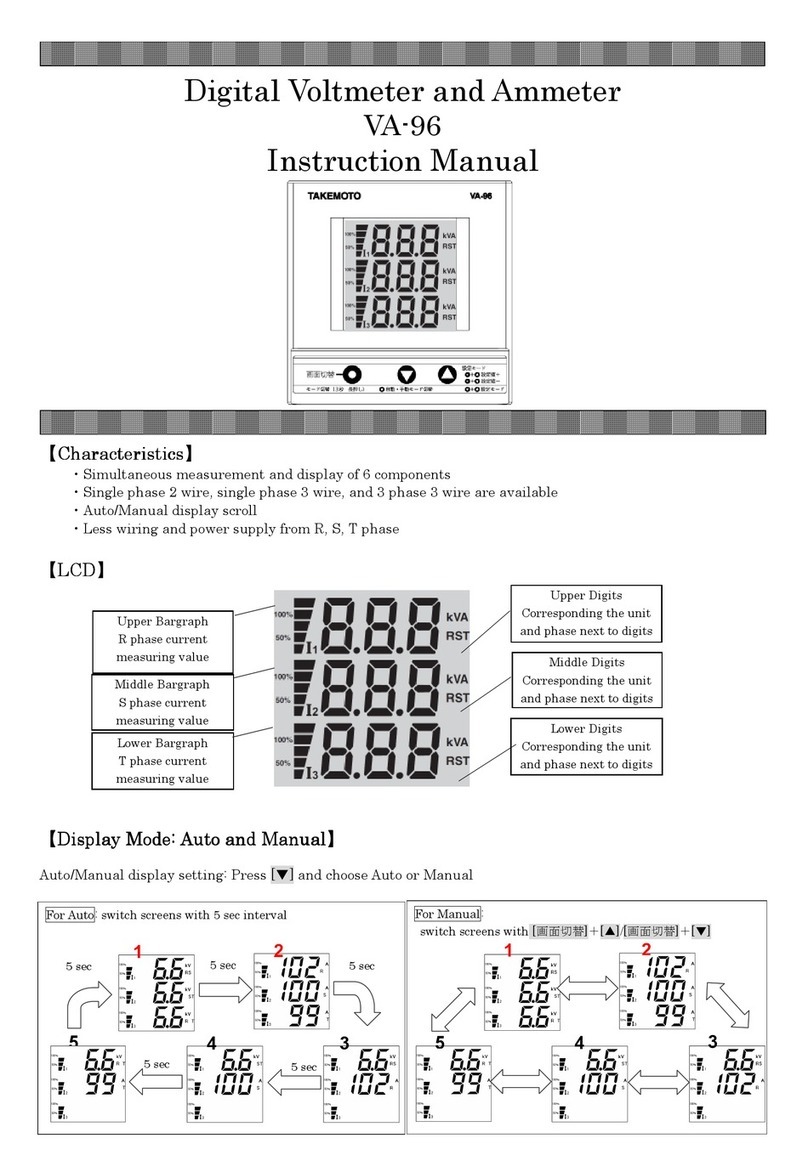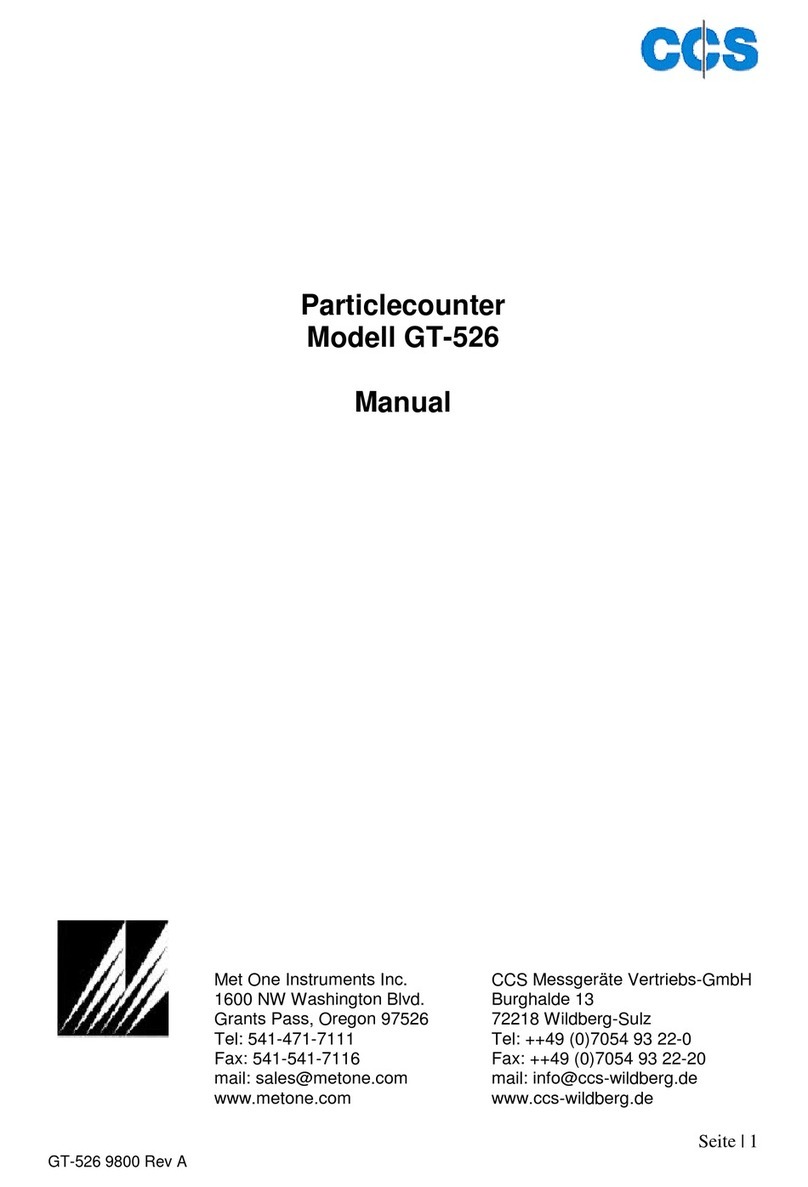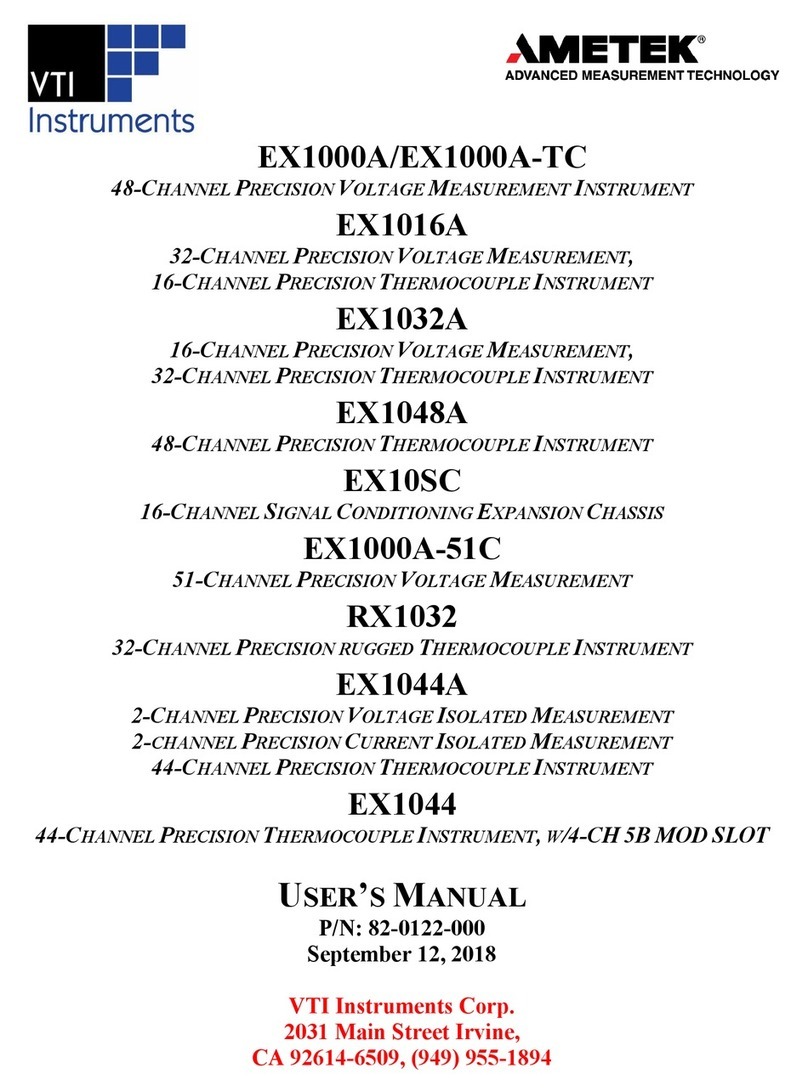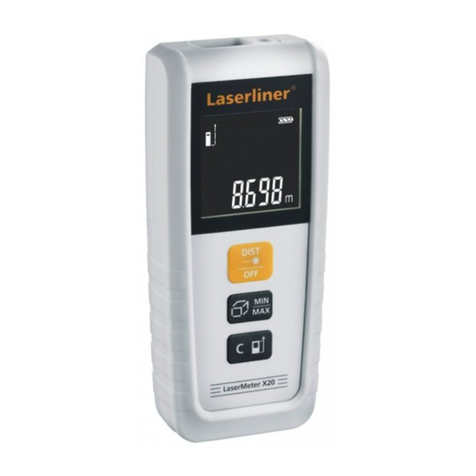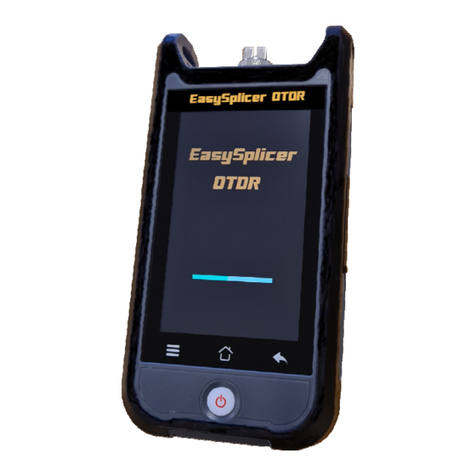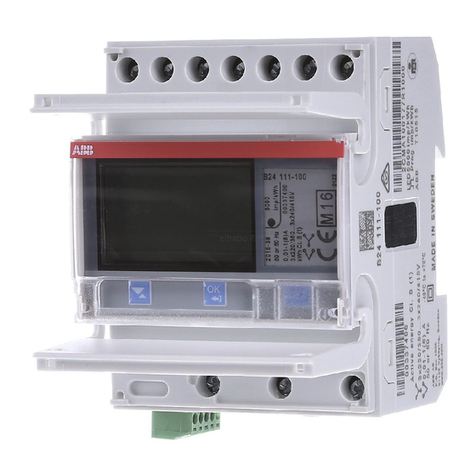SWR DensFlow User manual

BA_DF_0003_E_07_04

2
1SYSTEM OVERVIEW 3
2FUNCTION 3
3SAFETY 4
3.1 Regular Use 4
3.2 Identification of Dangers 4
3.3 Operational Safety 4
3.4 Technical Progress 4
4MOUNTING AND INSTALLATION 5
4.1 Delivery Range 5
4.2 Auxiliary 5
4.3 Mounting of the Measuring Pipe 5
4.4 Overview of the Connection of the Senor Pipe and Evaluation Unit 7
5COMMISSIONING 9
6MENU STRUCTURE OF DENSFLOW 11
7MENU PARAMETERS OF THE SYSTEM IN DETAIL 12
8MAINTENANCE 16
9WARRANTY 16
10 TROUBLE SHOOTING 16
11 TECHNICAL DATA 17

3
1 System Overview
Overview of the measuring system
2 Function
•DensFlow is a measuring system especially developed for measuring the flow rate of
conveyed solids in densephase.
•DensFlow is working according to the latest microprocessor technology. By special
capacitive linking of an electromagnetic wave a homogeneous measuring field is
produced in the pipe.
•The electromagnetic wave brought into the pipe is reciprocally acting with the solid
particles. These signals are evaluated in frequency and amplitude.
•The measurement of the solid speed is done by means of correlation. Two capacitive
sensors are used for the production of the correlation signals.
•A complete measuring unit consists of the sensor (measuring pipe) and the
evaluation unit.
Fig. 2: Coupling of the microwaves
Sensor (Measuring Pipe) Evaluation Unit

4
3 Safety
•The measuring system DensFlow was designed, built and tested to be safe and was
shipped in safe condition. Nevertheless persons or objects may be endangered by
components of the system if these are operated in an inexpert manner. Therefore the
operational instructions must be read completely and the safety notes must be
followed.
In case of inexpert or irregular use, the manufacturer will refuse any liability or
guarantee.
3.1 Regular Use
•The measuring system must be installed for measuring the flow rate only. Other usage and
modifications of the measuring system are not permitted.
•Only original spare parts and accessories of SWR engineering must be used.
•In order to prevent defects on the electronics, caused by e.g. electrostatic surge, the
flow velocity has to be below 50 m/s (e.g. free-blowing backwards).
3.2 Identification of Dangers
•Possible dangers when using the measuring system are marked by the following
symbols in the operating instructions:
Warning!
•This symbol in the operating instructions marks actions, which may represent a
danger for life and limb of persons when carried out in an inexpert manner.
Attention!
•All actions which may endanger objects are marked with this symbol in the operating
instructions.
3.3 Operational Safety
•The measuring system must be installed by trained and authorised personnel only.
•Switch off the supply voltage for all maintenance, cleaning or inspection works on the
tubes or on components of the DensFlow. Follow the notes of the chapter
maintenance.
•The components and electrical connections must be checked for damages regularly.
If a damage is found, it is to be repaired before further operation of the instruments.
3.4 Technical Progress
•The manufacturer reserves the right to adapt technical data to the technical progress
without particular advance notice. If you have any questions, SWR engineering will be
pleased to inform you on possible changes and extensions of the operating
instructions.

5
4 Mounting and Installation
4.1 Delivery Range
•Measuring instrument in a 19"-rack system.
•Sensor for installation into the pipe.
•Seal-ring for adjustment to the pipe.
•Operating instructions.
4.2 Auxiliary
•Appropriate wrench or ring wrench for screwing.
•Tools for adjusting the wiring.
4.3 Mounting of the Measuring Pipe
•The sensor is to be mounted as follows:
•Determine the place of mounting on the pipe. On horizontal or inclined pipes the
sensor should be mounted from top.
•Follow the necessary distances of valves, bows, fans or cellular wheel sluices etc.
and also other measurement devices like temperature and pressure etc. to the sensor
(see fig. 3).
The mounting has to be in a vertical position.
Fig. 3: Minimal distances of the sensor to pipe bends and baffles.

6
WARNING !
Before the installation you have to check, if there is a burr, a disalignment or a
seal in the intersection of the pipe and measuring sensor. If so, these
resistances in the pipe must be removed.
Fig. 4: Installation of the sensor accommodation.
•The electronic equipment should be installed at a maximum distance of 300 m from
the sensor. The housing is prepared for the 19"-rack system.

7
4.4 Overview of the Connection of the Senor Pipe and Evaluation
Unit
Fig. 5: Wiring of the Sensor Pipe and Measuring Instrument
A maximum length of 300 m of the sensor cable should not be exceeded.
A 5-wired cable is needed between sensor and evaluation unit.

8
Electrical Connection
•Fig. 6: Electrical Connection
Evaluation Unit
Terminal No. Connection
Connection of the Supply Voltage
2a/c + 4a/c Input Supply Voltage +24 V DC
6a/c + 8a/c Input Supply Voltage GND
Connections 10a RS 485 Data A
RS485 12a RS 485 Data B
16c Output 4..20mA +
Throughput 16a Output 4..20mA – (GND)
18c Output 4..20mA +
Density 18a Output 4..20mA – (GND)
20c Output 4..20mA +
Velocity 20a Output 4..20mA – (GND)
12c Density 0..20mA
22c Velocity A 0..20mA
24c Velocity B 0..20mA
28a/c Output Supply Voltage +24V +24V DC
Sensor
32a/c Output Supply Voltage 0V GND

9
5 Commissioning
•For start-up the measurement system it is necessary to adjust the sensor.
After switching on the power supply there is at least a warm-up time of 5
minutes required before any adjustment starts. Please check again :
•The correct cabling between sensor and the evaluation unit.
•The correct adjustment of the sensor pipe.
Commissioning DensFlow
For start-up the sensor has to be calibrated and parameterized to each
product, which will be measured. It is necessary to assign
the mass flow to the display and initial value. The menu
functions are mostly self-explaining. Following a short
introduction to the overview:
By leaving the menu level and confirming the memory
function all values changed are transferred.
Basic Function At least a two-point-calibration (normally min and max)
are sufficient for measuring the density function. Enter
the data in menu 3.5 and 3.6.
The velocity measurement is firmly defined as an
absolute measurement by the distance of the sensor
plates and does not have to be calibrated.
Min-Point Set point 1 to 0, when the mass flow is shut down and the
measuring pipe is empty, calibrate this point now.
Max-Point Set point 2 to known maximum flow rate with normal
conveying and calibrate as well. This value can be
adjusted later on when weighing by adjustment of
correction factor 2.6.
Thus the basic function of the measuring system is given
and it is now ready for operation
Adjustment See menu 2, point 1 to 6 for the adjustments to the
individual local conditions regarding material, measuring
units, etc.
Analog Output 1 is firmly configured for the measuring of the throughput.
The measuring range is adjusted in menu point 2.2.
0= 4 mA
Max =20 mA
Analog Output 2 is firmly configured for the measuring of the velocity.
The measuring range is adjusted in menu point 2.1.
0 = 4mA
Max = 20mA
Analog Output 3 is firmly configured for the measuring of the velocity.
The measuring range is fix adjusted to
0 m/s = 4 mA
10m/s = 20 mA

10
Average The measuring range filter is used for the adjustment to
slower working devices or for a continuous output of the
analog output.
Menu point 2.3 for velocity and
Menu point 2.4 for density.
Storage Adjusted values are confirmed by pressing the ENTER-
button. Leaving the menu level by pressing the ESC-
button. All changes are automatically stored and the new
values are set as standard.
Suggestion for the Calibration Procedure:
Step 1 Input of the requested throughput value of the final value of the measuring range
in menu point 2.2 e.g.: 20mA = 20000 Kg/h
Step 2 Input of the requested density value of the final value of the measuring range in
menu point 2.1 e.g.: 20mA = 800 Kg/m³
Step 3 Alignment of the minimum density value with empty pipe.
min = 0 kg/m³ in menu point 3.5
Step 4 Alignment of the maximum density value by complete filled pipe (e.g. 800 kg/m³)
in menu point 3.6
Step 5 Input the diameter of the pipe in menu point 2.5
Step 6 Conveying of the product on maximum throughput rate over a constant time
interval (e.g. 10 min.). During this time period the throughput must not change.
Step 7 Measurement of the throughput quantity by weighing.
Step 8 Calculation of the correction factor by differentiation
Value measured
Correction factor = -------------------------
Value weighted
Step 9 Correction of the measured value by entering the correction factor in menu
point 2.6

11
6 Menu Structure of DensFlow
1.1 Display
Density
1.2 Display
Throughput
1.3 Display
Velocity
2. Options
3. Service-
menu
2.1 – Density measuring range
2.2 – Throughput measuring
range
2.3 – Average velocity
2.4 – Average density
2.5 – Pipe diameter
2.6 – Correction factor
2.7 - Send parameters
2.8 - Language
3.1 - ADC-1 (Density)
3.2 - ADC-2 (Velocity)
3.3 - DAC-Simulation
3.3.1 - DAC1 (preset 4,8,12,16,20mA)
3.3.2 - DAC2 (preset 4,8,12,16,20mA)
3.4 - Density min-value
3.5 - Density max-value
3.6 - Velocity Range
3.7 - DAC-Calibration
3.7.1 - Ofs DAC1
3.7.2 - Ofs DAC2
3.7.3 - v DAC1
3.7.4 - v DAC2
3.8 - Slave Adress
1.4 Display
Totalisator

12
7 Menu Parameters of the System in Detail
1. Display of the Measured
Values 2. Options 3. Diagnosis
1.1 - Density 2.1 - Density measuring range
[kg/m³] 3.1 - A/D-1 (Density)
1.2 - Throughput 2.2 - Throughput measuring range
[kg/h] 3.2 - A/D-2 (Velocity)
1.3 - Velocity 2.3 - Average velocity 3.3 - Current output
(mA – preset)
1.4 - Totalisator 2.4 - Average density 3.4 - Density min value
2.5 - Pipe diameter [mm] 3.5 - Density max
value
2.6 - Correction factor 3.6 - Velocity measur-
ing range [m/s]
2.7 - Send parameters 3.7 - DAC-Calibration
2.8 - Language 3.8 - Slave Adress
Use of the Evaluation Unit by:
ENTER-button àSelection and Confirming
UP- / DN-button àChanging
ESC-button àBackwards
1.0 Display:
1.1 Display of the measured density in kg/m³
1.2 Display of the calculated throughput from
density and velocity [kg/h]
1.3 Display of the measured velocity in m/s
1.4 Display of the total flowrate since last reset
THROUGHPUT
0.0 Kg/h
DENSITY
0.0 Kg/m3
VELOCITY
0.00 m/s
TOTALISATOR
0.00 Kg

13
2. Options:
Press ENTER Button
2.1 Entry of the density measuring range in
50 kg/m³ - steps.
2.2 Entry of the throughput range in 100 kg/m³ - steps.
Final value of measuring range [kg/h] = 20mA
2.3 Entry of the average time for the
velocity (0..120s)
àDamping of the signal
2.4 Entry of the average time for the
density (0...120s)
àDamping of the signal
2.5 Entry of the pipe diameter in mm.
Necessary for the correct calculation
of the quantity.
2.6 Entry of the correction factor for the
throughput (0.1...10)
Here the value received can be corrected
lateron by changing the preset value to 1.
2.7 Send parameter
By pressing YES the parameters factor correction,
throughput range, density measuring range will be
send via RS485 interface to all connected instruments
2.8 Select Language
between German and English
OPTIONS
Density Range
= 800 [Kg/m³]
Average D
= 10s [ 25 ]
Average V
= 10s [ 25 ]
Correction Factor
= 1.0
Pipe Diameter
= 32.0 mm
Throughput Range
= 20000 Kg/h
Parameter send
= No / Yes
Language
English

14
3. Service menu:
To get into the diagnostic mode press
ESC and ENTER button at the same time
3.1 Display current value A/D-converter 1 (Density)
3.2 Display Voltage level A/D-converter 2 (Velocity)
3.3 Selection Current value for test purposes.
Here a constant current ( 4, 8, 12, 20mA)
can be presetted on output 1 for testing purposes.
Here a constant current ( 4, 8, 12, 20mA)
can be presetted on output 2 for testing purposes.
3.4 Entry of the minimum value for the density range.
usually 0-value (Measuring pipe empty).
The dimensionless value must be changed
so far, until 0% are indicated.
3.5 Entry of the maximum value for the density range.
Here you can enter the value, which can
maximally be expected or a second measuring
point. The dimensionless value must be changed
so far, until the requested percentage is indicated.
3.6 Input of the velocity
Standard = 10m/s ex works presetted.
3.7 DAC-Calibration for current outputs
press ENTER to select submenu
Offset Calibration
for 4 mA output 1 (throughput)
Service menu
ADC 1 (Density)
I=0.0mA [ 0h]
ADC 2 (Velocity)
I=0.0mA [ 0h]
DAC Simulation
DAC 1 [ENTER]
I = 04mA
Density Min
= 0072 [ 0.0%]
Density Max
= 2568 [ 100%]
Velocity range
= 10.0 m/s
DAC 2 [ENTER]
I = 04mA
DAC-Calibration
DAC-Calibration
Of's DAC1 +0

15
Offset Calibration
for 4 mA output 2 (density)
Span Calibration
for 20 mA output 1 (throughput)
Span Calibration
for 20 mA output 2 (density)
3.8 Slave Adress
select slave adress for ModBus - comunication
Totalisator
with the totalisator function it is possible to monitor
entire flow rate since the last reset of the Totalisator
A RESET of the counts can be accomplished over
pressing the ENTER and selection of YES or NO
with UP / DOWN button.
Stop Totalisator
press ESC
DAC-Calibration
Of's DAC2 +0
DAC-Calibration
V DAC1 +1
DAC-Calibration
V DAC2 +1
Slave Adress
001
TOTALISATOR
1,0 Kg
TOTALISATOR
Reset: 'NO'
TOTALISATOR
H: 1,0 Kg

16
8 Maintenance
•Warning!
Danger of shock with opened housing!
•Switch off the supply voltage for all maintenance or repair works on the measuring
system. The pipe must not be in operation during a sensor exchange.
•Repair and maintenance work must be carried out by trained or expert personnel only.
9 Warranty
Warranty is granted for two years starting from delivery date under the condition that
the operational instructions have been followed, no interventions on the appliances
have been made and the components of the system show no mechanical damage or
wear resistance.
In case of a defect during the warranty period, defective components are repaired or
are replaced free of charge. Replaced parts turn into the property of SWR. If desired
by the customer that the parts should be repaired or replaced in its factory, then the
customer has to take over the costs for the SWR-service staff.
SWR is not responsible for damage, which did not develop at the delivery article;
especially SWR is not responsible for escaped profit or other financial damages of
the customer.
10 Trouble shooting
•Warning!
The electrical installation must only be checked by expert personnel.
Problem Cause Measure
Measuring system
does not work. Power supply interrupted.
Break of a cable.
Fuse defective.
Device defective.
Check the power supply.
Check the connecting cables for a possible
break of a cable.
Exchange the fuse in the field housing .
Measuring system
outputs wrong values Calibration not correct.
Calibration shifted by
abrasion on front end of
sensor.
Delete input signal correction, new calibration
according to section 6.
Delete input signal correction, new calibration
according to section 6.
Relay flickering Hysteresis too small. Increase hysteresis, check effects caused by
external devices.
Do not open, as otherwise the warranty claim expires!

17
11 Technical Data
Sensor Pipe
Housing: Steel St52, powder-coated
(stainless steel 1.4541) option
NW 10....250, Flange DIN 2576
Inner pipe: Ceramics, POM, PTFE
Protection category: IP65
Operating temperature: Sensor pipe: -20....+ 120 °C
Option: -20....+ 220 °C
Sensor electronic: 0....+ 60 °C
Max. working pressure: 10 bar, option20 bar
Max. accept. flow velocity 50 m/s
Working frequency: 100kHz
Transmitting power: max. 2 mW
Weight: Depending on nominal size
Dimension: Ø NW +90mm, L 500mm
Accuracy: +/- 2...5% in calibrated range
Evaluation Unit
Supply voltage: 24V DC
Power consumption: 12 W
Operating temperature: –10...+45 °C
Dimension: 19"-rack system, 3HE, 28TE, L=227mm
Weight: approx. 0.7 kg
Additional Data:
Input: 2 x Velocity 0..20mA or 0..10V
1 x Density 0..20mA
1 x PFM-Input 14V, Imax 35mA, 30..3kHz
Connections: Connector (DIN 41612)
Type B, 32-pol., connector
Current output: Throughput: : 4...20mA
Density : 4...20mA
Velocity : 4...20mA
Load < 500 Ω
Serial output: RS232 / 485, MOD-Bus-Protocol
Sub-D 9-pol., connector
Control unit: LCD-Display, lighted, 16 x 2 digits
4 x push buttons
Data storage: EEPROM
EN 070507
Table of contents
Other SWR Measuring Instrument manuals
